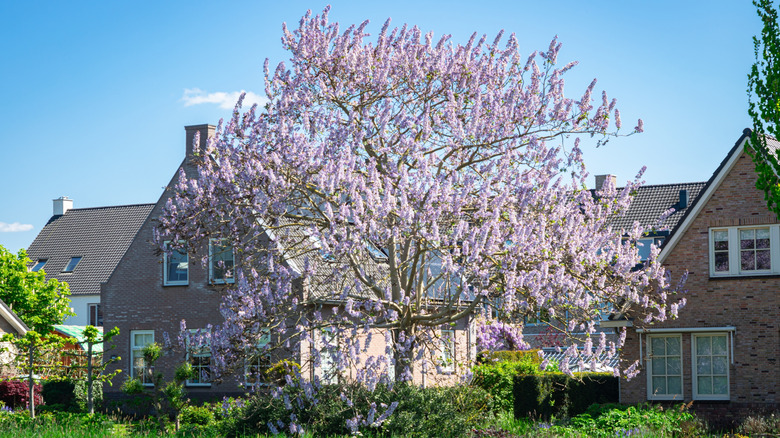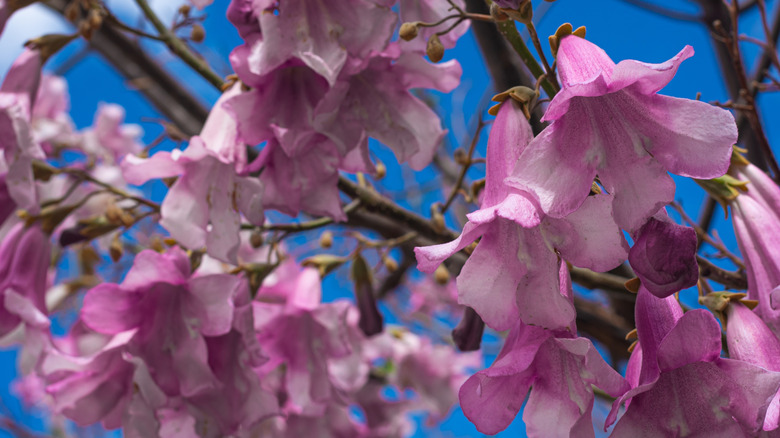Why Planting An Empress Tree Could Be A Big Mistake
So you've been shopping around for a flowering tree — something eye-catching and fragrant that will give your garden the show-stopping centerpiece it deserves. You've discarded the usual suspects, the crabapples and dogwoods, because you want something a little different ... something you don't see every day. Maybe it's the dramatic name that catches your attention during your search — the empress or princess tree, named for a 19th century Russian empress — or maybe it's the maybe it's the look of the trees with purple bell-shaped flowers that bloom in the springtime. But before you go looking for a sapling to bring home, you might want to think twice and do a little research; empress trees (Paulownia tomentosa) are considered invasive and problematic in many states, and for good reason.
It's worth avoiding these east Asian trees, especially in their preferred USDA Hardiness Zones 5 through 9, because they multiply rapidly. And, once established, they can be very difficult to entirely eradicate. They're prolific self-seeders and by eight to 10 years old they're capable of producing over 20 million seeds, which can be distributed by the wind or moving water. These hardwood trees are fast growing as well and easily able to outcompete native species. In fact, they can grow up to 15 feet per year. And simply cutting or even burning it down won't be the end of it: Any roots left in the soil will produce shoots, often quite far away from where the original tree stood.
What to plant instead of empress trees
Empress trees aren't expressly considered a problem in all states — in some climates, they may not behave as invasively, and if they're grown as shrubs, some of the aggressive self-seeding behavior is eliminated. However, it's probably a good idea to explore other options even if it isn't considered invasive in your area. This is especially wise if you aren't a fan of constantly raking and cleaning branches out of your yard: With their weak wood and brittle branches, empress trees tend to make a mess!
One good place to look for an alternate option suited to the same zones is in the serviceberry genus (Amelanchier spp.), part of the rose family, which offers attractive spring-flowering shrubs and small trees that produce edible berries, hardy in zones 4 through 9. If the coloring of the empress tree's flowers is what drew your attention in the first place and you're located in a warmer climate, you might try the jacaranda (Jacaranda procera), a spring purple-flowering tree that features attractive fern-like foliage. Another showy option for purple lovers (and impatient gardeners who want a tree that will grow rapidly) is the crepe myrtle (Lagerstroemia indica. Just make sure you pick a cultivar known for violet blooms.

